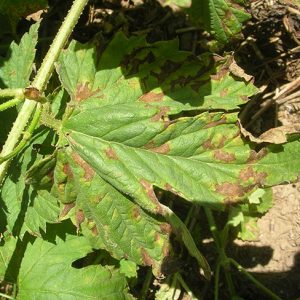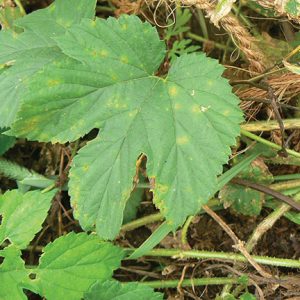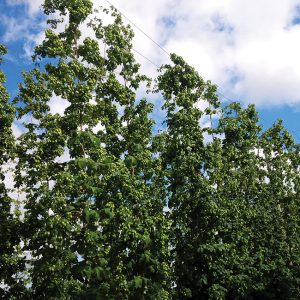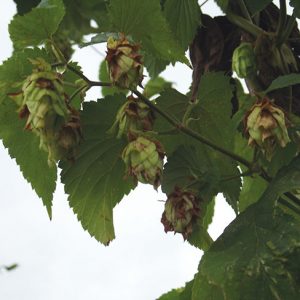
Features
Other Crops
Research
Hops research continues in Ontario
As the hops market expands, so does acreage and the need for local research.
December 24, 2020 By Julienne Isaacs
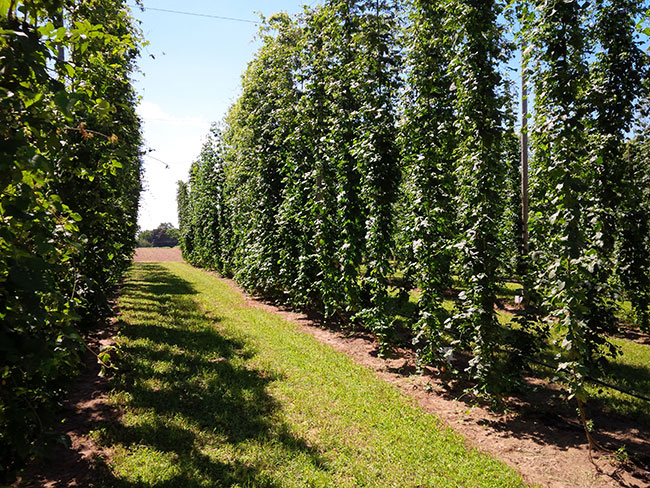 Different hop cultivars have distinct flavour and aroma
profiles, so it’s best to establish a market before planting.
Photos courtesy of OMAFRA.
Different hop cultivars have distinct flavour and aroma
profiles, so it’s best to establish a market before planting.
Photos courtesy of OMAFRA.
After a period of rapid market growth, hops occupy a substantial niche in Ontario.
Ten years ago, there were at most seven growers growing 15 acres of hops in the province. As of 2019, there were more than 65 farming more than 225 acres, according to Evan Elford, new crop development specialist for the Ontario Ministry of Agriculture, Food and Rural Affairs (OMAFRA).
Shortages internationally, as well as a disastrous 2006 warehouse fire in Yakima, Wash., that destroyed a significant portion of the global hops supply, initially pushed the local industry to step up, he says. But after markets recovered from the shortfall, international acreage has increased to its highest levels since the mid-1990s. At the same time, the rise in craft breweries and demand for local beer has driven growth at home.
“Back in 2011 we had around 57 craft breweries in the province,” he says. “Fast forward to 2020, there are over 300.”
As a result, the local market has changed dramatically, Elford says. “It is a much different market now than even five years ago, with much higher acreage and volumes of hops available compared to when many Ontario growers started.”
Ten years ago, most growers started with half an acre to three acres of hops, he says. Anything over half an acre of hops is considered commercial production based on the value of the crop and expected yield, but growers need significantly more than that to supply a year-round brew at a craft brewery. These days, Elford says producers generally enter hops production with four to five acres with the potential to expand to 10 to 15 acres.
More acres are required to justify equipment and storage costs; producers require mechanical harvesters, processing equipment such as an oast house for drying, pelletizing and vacuum packing equipment, and cold storage facilities.
Because it’s such a high-value crop grown on so few acres, the stakes are proportionately higher when it comes to hop performance. In other words, hops research has never been more important.
Breeding and BMPs
A big focus of research in Ontario has been cultivar performance, led by the University of Guelph Simcoe Research Station. Hops are like apples, Elford explains, in that brewers buy specific cultivars depending on the style of beer they’re making. “Different cultivars impart distinct profiles in both flavour and aroma,” he says.
Agriculture and Agri-Food Canada is leading a native hops selection and screening trial to introduce new cultivars to the Canadian market. It’s a new project and the results are pending, Elford says. Most hop breeding happens in the Pacific Northwest, but another big change to the market has come with a shift toward private breeding programs and an uptick in proprietary varieties.
Beyond breeding, OMAFRA has led the charge in researching hop agronomics.
The research has helped growers develop a set of best management practices. Top of the list, Elford says, is doing background market research and connecting with breweries or alternative markets prior to planting anything. This is especially important these days, as many producers reduce acreage or even exit hops production altogether due to low prices.
Once markets are established, starting with clean plants that are tested for hop downy mildew and indexed for hop viruses is vital.
Producers should also ensure good irrigation systems and fertility plans are in place before planting; hops require a large volume of water and complex fertility regimes. Hop fertility guidelines can be found on OMAFRA’s website, along with other guidelines such as hop yard construction and hop harvest timelines.
Currently, OMAFRA is running trials in Simcoe looking at chemical and mechanical removal of lower leaves on hop bines (called “leaf stripping”) to assess its impact on disease and yield.
The team has also looked at frost management strategies following late spring frost events in 2012 and 2014 that caused dieback or complete kill of the bines.
Disease and pest outlook
Since the early variety trials ten years ago, a major research focus has been hop downy mildew management. The hops-specific disease, caused by the fungal-like organism Pseudoperonospora humuli, constitutes a major threat to hops production, because it can become systemic in the plant and return every year.
Another threat is viruses like hop mosaic virus and apple mosaic virus, which can cause significant crop losses within three years of planting, Elford says.
Melanie Filotas is OMAFRA’s horticulture integrated pest management specialist, who works on hops pest management. She says that in 2020, downy mildew was present at roughly normal incidence in Ontario. “As is typical, symptoms were most noticeable during spring rains earlier in the season, [but] most growers are now accustomed to managing for the disease and were able to keep the disease under control with regular spray programs,” she says.
Neither were there large outbreaks of powdery mildew in the province to match those experienced by producers in the Pacific Northwest or occasionally in Michigan.
“But growers should consider preventative sprays as, in some yards, powdery mildew has been observed where sprays were skipped to save costs,” she says.
Control of downy mildew goes beyond spraying, however, and includes sanitation practices like pruning basal foliage, which can help remove pathogen inoculum from the plant, as well as limiting excess nitrogen fertilization and avoiding overhead irrigation.
Researchers at the University of Guelph have recently wrapped up a multi-year research trial focusing on downy mildew and cone diseases, Filotas says. This included evaluating a U.S. downy mildew forecasting model for Ontario, testing Ontario downy mildew strains for resistance to two fungicides and evaluating biological/organic fungicides for control of downy mildew and cone diseases. Results are forthcoming.
Resources on hops pest management and fertility recommendations can be found at www.onspecialtycrops.wordpress.com. Additional resources can be found at OMAFRA’s hop webpage, the OMAFRA Specialty Cropportunities hop profile and the Ontario Hop Growers’ Association webpage.
